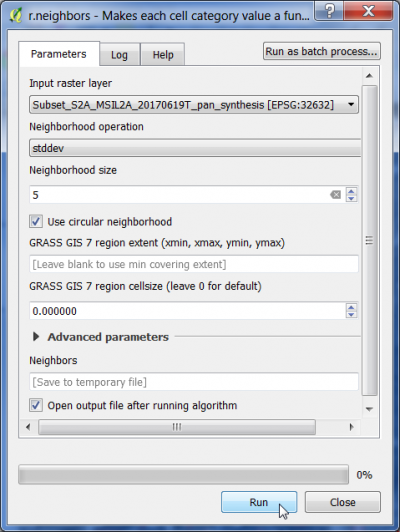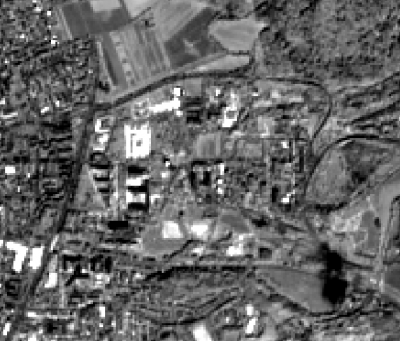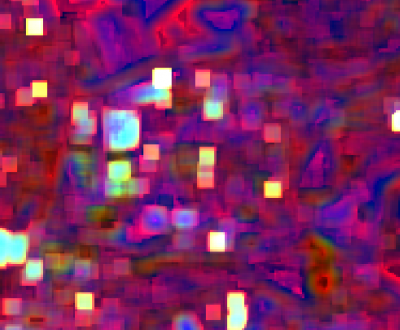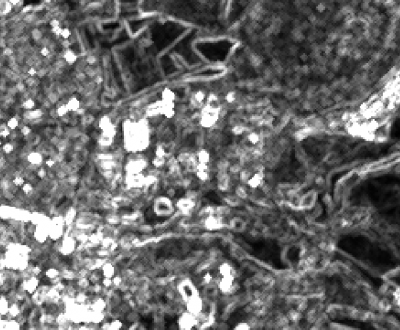First-order texture
From AWF-Wiki
(Difference between revisions)
| Line 4: | Line 4: | ||
* In case of a multiband file select the band number. | * In case of a multiband file select the band number. | ||
* Select an integer number as '''Neighborhood size''' in pixels. | * Select an integer number as '''Neighborhood size''' in pixels. | ||
| − | + | [File:Qgis_texture_Localstatistics.png|400px] | |
| − | + | The output image is a multiband with 4 statistical moments per band in the exact order: | |
# Mean | # Mean | ||
# Variance | # Variance | ||
Revision as of 15:46, 20 November 2017
Local statistical moments (Mean, Variance, Standard deviation, Skewness, Kurtosis) calculated on every pixel in the selected channel of the input image, over a specified neighborhood are called first-order textures.
- In the search engine of the Processing Toolbox, type Local Statistic and select Local Statistic Extraction under Feature Extraction of the Orfeo Toolbox.
- Under the Parameters tab, select a single band or a multiband file as input layer.
- In case of a multiband file select the band number.
- Select an integer number as Neighborhood size in pixels.
[File:Qgis_texture_Localstatistics.png|400px] The output image is a multiband with 4 statistical moments per band in the exact order:
- Mean
- Variance
- Skewness
- Kurtosis
The standard deviation of gray levels in a region in the neighborhood of a pixel can be calculated by a GRASS GIS modul:
- In the search engine of the Processing Toolbox, type neighbors and select r.neighbors under Raster of GRASS GIS 7 commands.
- Under the Parameters tab, select a single band file as input layer.
- Select stddev from the drop-down list Neighborhood operation.
- Select an odd integer number as Neighborhood size in pixels.
- Tick Use circular neighborhood.



